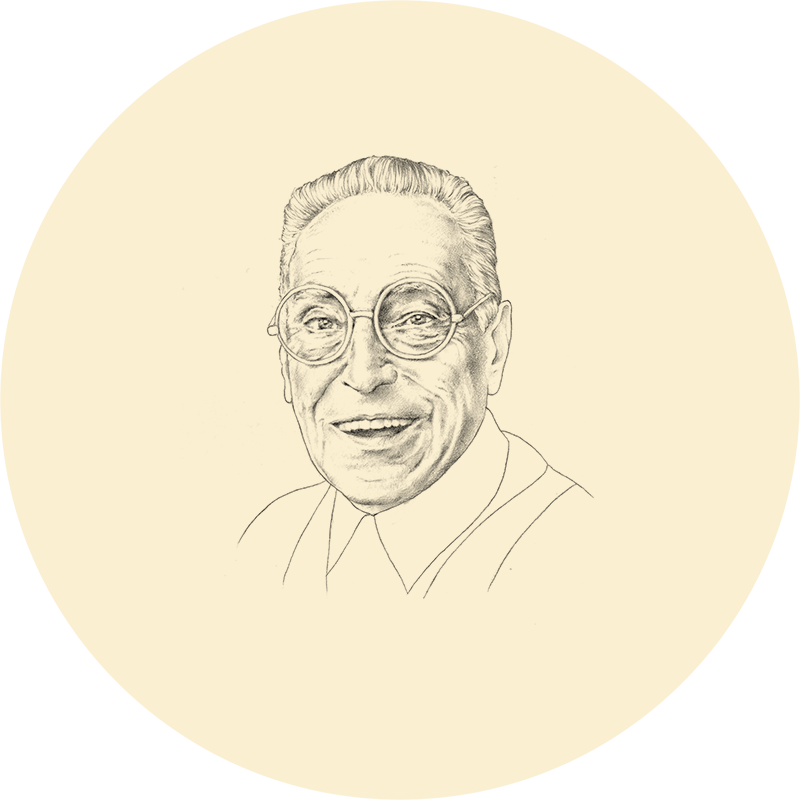It takes Livio’s visionary nature to understand your way of working, Achille. Livio, your big brother, who took a degree in architecture and opened a studio with a classmate, Luigi Caccia Dominioni, immediately joined by Pier Giacomo, the other brother. Where? It goes without saying: Porta Nuova. As soon as you graduated you joined the firm. After the war, Caccia Dominioni decided to go his own way, and Livio was already starting to have other things in mind. He was fascinated by science, radio waves, music, technology. In those years, you three brothers designed the Novaradio receiver together. Basically it was a way of putting your childhood adventures into practice, to make them into a profession. Do you remember when you were ten, in the attic with Livio and Pier Giacomo, and you made two radio receivers and a transmitter?
The three of you never stopped playing. Even after the war, adults by now, you went to lunch on Sundays above your father’s studio, on the first floor, since the family apartment had been bombed. How many people were there, counting parents, children, grandchildren? How many soccer matches in that 19th-century courtyard on Corso di Porta Nuova, amidst crafts workshops and stray cats? Livio made you feel like pioneers. Even as grown-ups you never stopped playing, with that serious mien only kids have. Playing to experiment, to learn new forms, new ways of looking at the world, like pioneers. Livio left the studio to become a consultant for Phonola, and then for Brionvega. But the three of you certainly didn’t stop playing, together. Especially at Lierna, when you launched balloons of tissue paper and then had to chase them with a boat, out on the lake, to retrieve them. You learned about lightness, about what was essential. The substance of the ephemeral.
All this came in handy when, with Pier Giacomo, you had to design installations for the pavilions of the RAI, or the companies Montecatini or ENI, at the Milan Fair, that sort of miniature Universal Exposition, which took stock of developments in technology and business every spring. Worksites of impermanence, gardens of wonders, where craftsmen, masons and electricians built fantastic temporary worlds. To prepare the exhibits you worked with graphic designers like Tovaglia, Provinciali, Bianconi, Iliprandi, Mondaini. Plenty of all-night sessions, to meet the deadlines.
It takes the precision of Max Huber to understand what friendship means to you, Achille. They say that Huber came to Milan for a work appointment, but he had no business cards. So he made one there, on the spot, etching it onto a piece of cardboard, as perfect as if it had been printed on a press. Your work was team effort, full of exchanges, everyone learning from everyone else. But apart from professional life, there were the personal relationships. When you three brothers went to his wedding, at Zug, you put together a makeshift fireworks display for the newlyweds, like mischievous demolition men. A friendship that lasted a lifetime.
